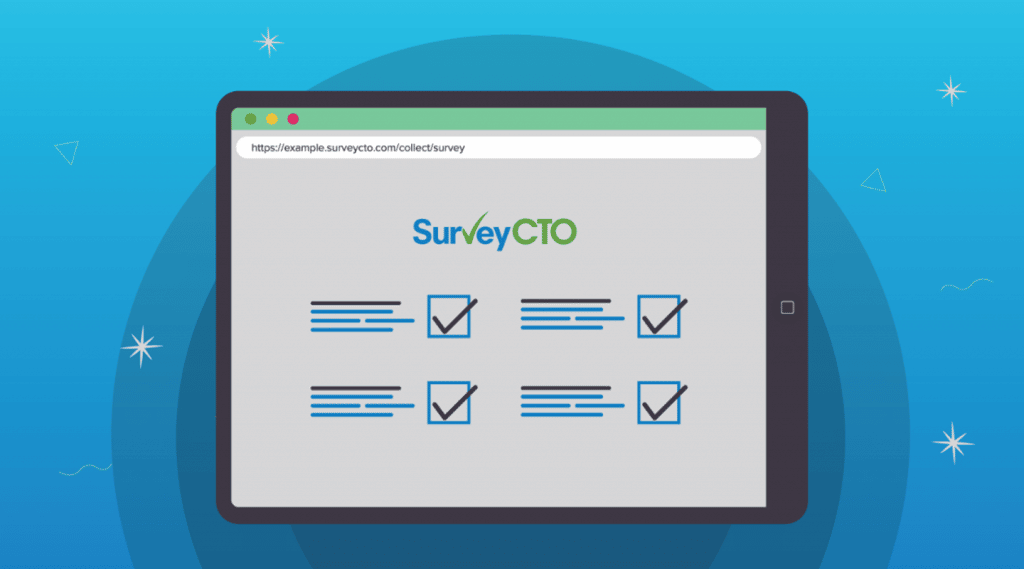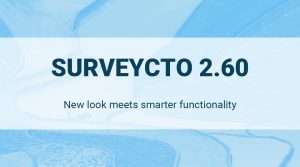- Last Updated: March 17, 2025
A good survey can make or break your research. Learn how to write strong survey questions, learn what not to do, and see a range of practical examples.
The accuracy and relevance of the data you collect depend largely on the quality of your survey questions. In other words, good questions make for good research outcomes.
It makes sense then, that you should put considerable thought and planning into writing your research survey or questionnaire.
In this article, we’ll go through what a good survey question looks like, talk about the different kinds of survey questions that exist, give you some tips for writing a strong survey question, and finally, we’ll take a look at some examples.
What is a good survey question?
A good survey question should contain simple and clear language. It should elicit responses that are accurate and that help you learn more about your target audience and their experiences. It should also fit in with the overall design of your survey project and connect with your research objective.
There are many different types of survey questions. Let’s take a look at some of them now.
New to survey data collection? Explore SurveyCTO for free with a 15-day trial.
Types of survey questions
Different types of questions are used for different purposes. Often questionnaires or surveys will combine several types of questions. The types you choose will depend on the overall design of your survey and your aims.
Here is a list of the most popular kinds of survey questions:
Open-ended
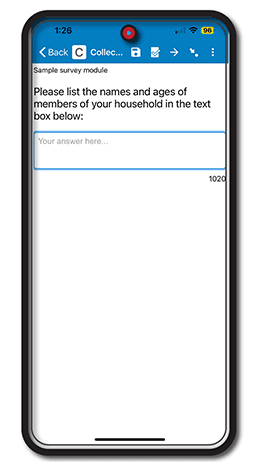
These questions can’t be answered with a simple yes or no. They require the respondent to use more descriptive language to share their thoughts and answer the question. These types of questions result in qualitative data.
Closed-ended
A closed-ended question is the opposite of an open-ended question. Here the respondent’s answers are normally restricted to a yes or no, true or false, or multiple-choice answer. This results in quantitative data.
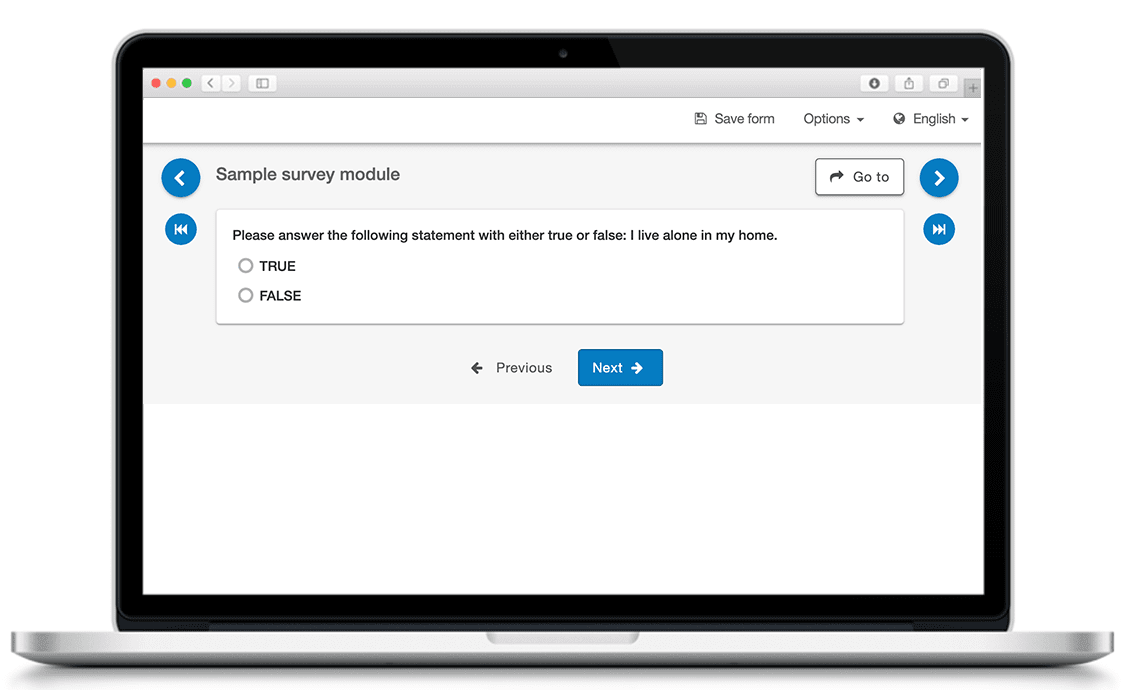
Dichotomous
This is a type of closed-ended question. The defining characteristic of these questions is that they have two opposing fields. For example, a question that can only be answered with a yes/no answer is a dichotomous question.
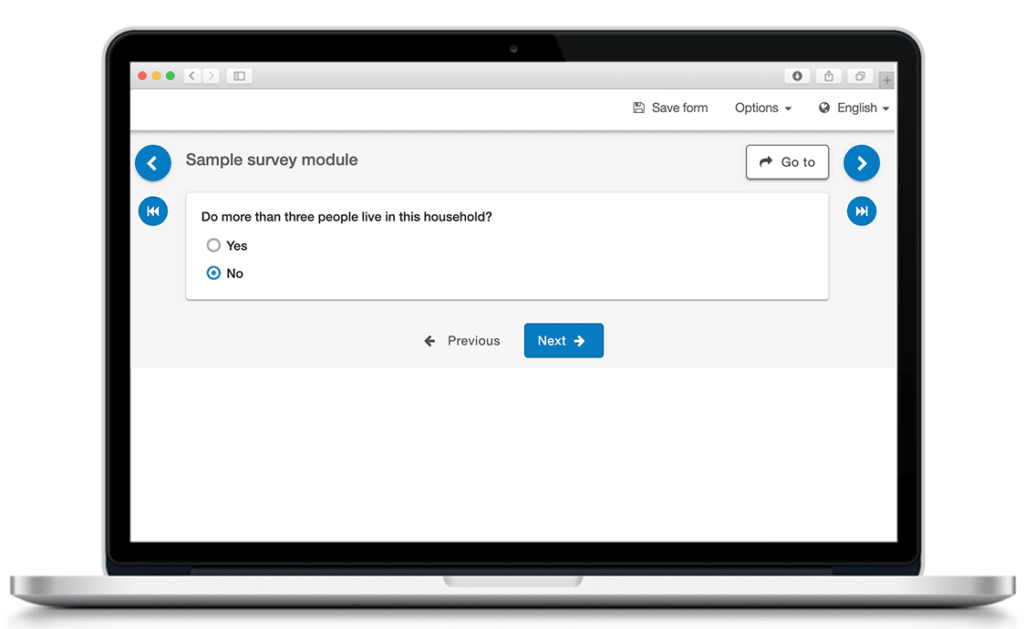
Multiple choice
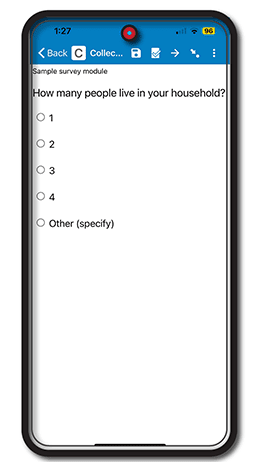
These are another type of closed-ended question. Here you give the respondent several possible ways, or options, in which they can respond. It’s also common to have an “other” section with a text box where the respondent can provide an unlisted answer.
Rating scale
This is again another type of close-ended question. Here you would normally present two extremes and the respondent has to choose between these extremes or an option placed along the scale.
Likert scale
A Likert scale is a form of a rating scale. These are generally used to measure attitudes towards something by asking the respondent to agree or disagree with a statement. They are commonly used to measure satisfaction.
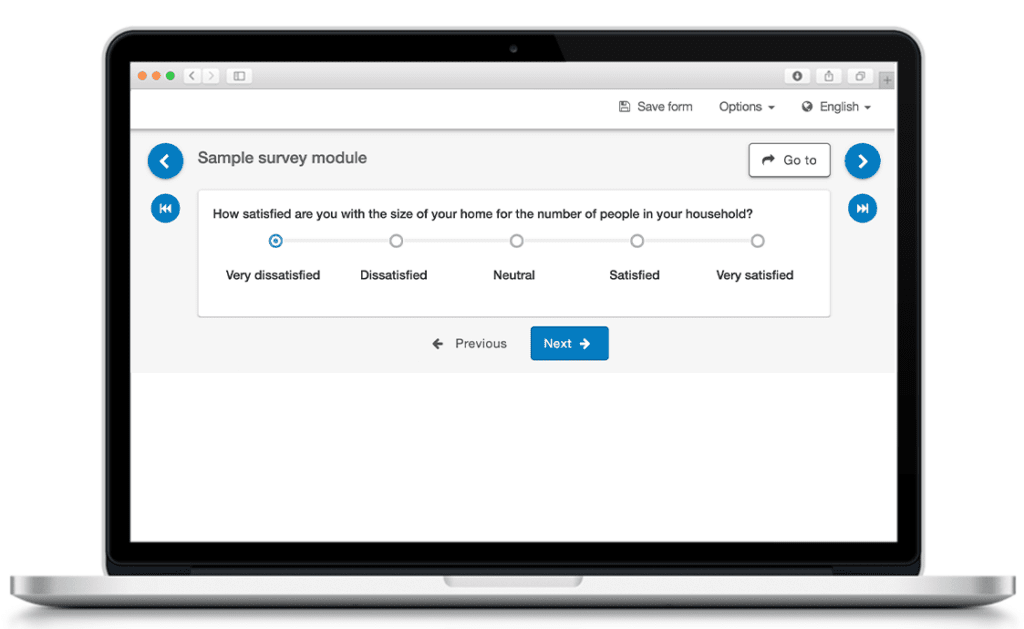
Ranking scale
Here the respondents are given a few options and they need to order these different options in terms of importance, relevance, or according to the instructions.
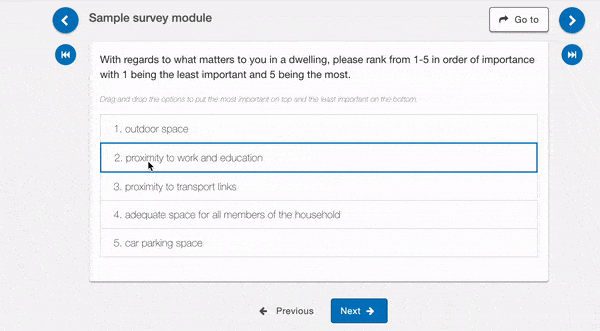
Demographic questions
These are often personal questions that allow you to better understand your respondents and their backgrounds. They normally cover questions related to age, race, marital status, education level, etc.
Ready to start creating your surveys? Sign up for a free 15-day trial.
7 Tips for writing a good survey question
The following 7 tips will help you to write a good survey question:
1. Use clear, simple language
Your survey questions must be easy to understand. When they’re straight to the point, it’s more likely that your respondent will understand what you are asking of them and be able to respond accurately, giving you the data you need.
2. Keep your questions (and answers) concise
When sentences or questions are convoluted or confusing, respondents might misunderstand the question. If your questions are too long, they may also get bored by the questions. And in your lists of answers for multiple choice questions, make sure your choice lists are concise as well.
If your questions are too long, or if you’ve provided too many options, you may receive responses that are inaccurate or that are not a true representation of how the respondent feels.
To limit the number of options a respondent sees, you can use a survey platform like SurveyCTO to filter choice lists and make it easy for respondents to answer quickly. If you have an exceptionally long list of possible responses, like countries, implement search functionality in your list of choices so your respondents can quickly search for their selection.
3. Don’t add bias to your question
You should avoid leading your respondent in any particular direction with your questions, you want their response to be 100% their thoughts without being unduly influenced.
An example of a question that could lead the respondent in a particular direction would be:
How happy are you to live in this amazing area?
By adding the adjective amazing before area, you are putting the idea in the respondent’s head that the area is amazing. This could cloud their judgment and influence the way they answer the question. The word happy together with amazing may also be problematic. A better, less loaded way to ask this question might be something like this:
How satisfied are you living in this area?
4. Ask one question at a time
Asking multiple things in one question is confusing and will lead to inaccuracies in the answer. When you write your question you should know exactly what you want to achieve. This will help you to avoid combining two questions in one.
Here is an example of a double-barrelled question that would be difficult for a respondent to answer:
Please answer yes or no to the following question:
Do you drive to work and do you carry any passengers?
In this question, the respondent is being asked two things, yet they only have the opportunity to respond to one. Even then, they don’t know which one they should respond to. Avoid this kind of questioning to get clearer, more accurate data.
5. Account for all possible answer choices
You should give your respondent the ability to answer a question accurately.
For instance, if you are asking a demographic question you’ll need to provide options that accurately reflect their experience. Below, you can see there is an “other” option with space where the respondent can answer how they see fit, in the case that they don’t fit into any of the other options.
Which gender do you most identify with:
- Man
- Woman
- Nonbinary
- Prefer not to say
- Other [specify]
6. Plan the question flow and choose your questions carefully
Question writing goes hand-in-hand with questionnaire design. So, when writing survey questions, you should consider the survey as a whole. For example, if you write a close-ended question like:
Were you satisfied with the customer service you received when you bought x product?
You might want to follow it up with an open-ended question such as:
Please explain the reason for your answer:
This will help you draw out more information from your respondent that can help you assess the strengths and weaknesses of your customer service team.
Making sure your questions flow in a logical order is also important.
For instance, if you ask a question regarding the total cost of a person’s childcare arrangements, but you’re unaware if they have children, you should first ask if they have children and how many.
It’s also a good idea to start your survey with short, easy-to-answer, non-sensitive questions before moving on to something more complex. This way there is more chance you’ll engage your audience early on and make it more likely that they’ll continue with the survey.
You should also consider whether you need qualitative or quantitative data for your research outcomes or a mix of the two. This will help you decide the balance of closed-ended and open-ended questions you use.
With close-ended questions, you get quantitative data. This data will be fairly conclusive and simple to analyze. It can be useful when you need to measure specific variables or metrics like population sizes, education levels, literacy levels, etc.

On the other hand, qualitative data gained by open-ended questions can be full of insights. However, these questions can be more laborious for the respondent to complete making it more likely for them to skip through or give a token answer. They’re also more complex to analyze.
7. Test your surveys
Before a questionnaire goes anywhere near a respondent, it needs to be checked over. Mistakes in your survey questions can give inaccurate results. They can also waste time and resources.
Having an impartial person check your questions can also help prevent bias. So, not only should you check your work, but you should also share it with colleagues for them to check.
After checking your survey questions, make sure to check the functionality and flow of your survey. If you’re building your form in SurveyCTO, you can use our form testing interface to catch errors, make quick fixes, and test your workflows with real data.

Examples of good survey questions
Now that we’ve gone through some dos and don’ts for writing survey questions, we can move on to more practical examples of how a good survey question should look. To keep these specific to the research world we’ll look at three categories of questions.
- Household survey questions
- Monitoring and evaluation survey questions
- Impact evaluation survey questions
1. Household Survey Questions
How many people live in your household (including you)?
How many bedrooms does your dwelling have?
a) 1
b) 2
c) 3
d) 4
e) other [free text box]
Do you feel safe in your current neighborhood?
a) yes
b) no
c) sometimes
Please explain in your own words the reason for your choice:
What is your marital status?
a) single
b) married
c) divorced
d) widowed
e) other [free text box]
2. Monitoring and evaluation survey questions
How satisfied were you with the level of care you recently received at [hospital name]?
1) very dissatisfied
2) dissatisfied
3) neutral
4) satisfied
5) very satisfied
Please state the reason for your score:
Please rank the following attributes in a labor and delivery nurse, with 1 being the most important to you and 5 the least important:
1) Kindness and empathy
2) Speed of response and availability
3) Medical skill level
4) Sense of humor
5) Awareness of different cultures and traditions relating to childbirth
3. Impact evaluation questions
Would you say the intervention was successful and why?
What were the positive outcomes of the intervention?
What were the negative outcomes of the intervention?
Are the changes brought about by the intervention sustainable?
a) yes
b) no
c) not sure
d) other [free text box]
Strong survey questions lead to better research outcomes
Writing good survey questions is essential if you want to achieve your research aims.
A good survey question should be clear, concise, and contain simple language. They should be free of bias and not lead the respondent in any direction. Your survey questions need to complement each other, engage your audience and connect back to the overall objectives of your research.
Creating survey questions and survey designs is a large part of your research, however, is just a part of the puzzle. When your questions are ready, you’ll need to conduct your survey and then find a way to manage your data and workflow. Take a look at this post to see more ways SurveyCTO can help you beyond writing your research survey questions.
Your next steps: Explore more resources
To keep reading about how SurveyCTO can help you design better surveys, take a look at these resources:
- Sign up here to get notified about our monthly webinars, where organizations like IDinsight share best practices for effective surveys.
- Check out previous webinars from SurveyCTO about survey forms, like this one on high-frequency checks for monitoring surveys.
- Sign up for a free trial of SurveyCTO for your next survey project.
To see how SurveyCTO can help you with your survey needs, start a free 15-day trial today. No credit card required.



